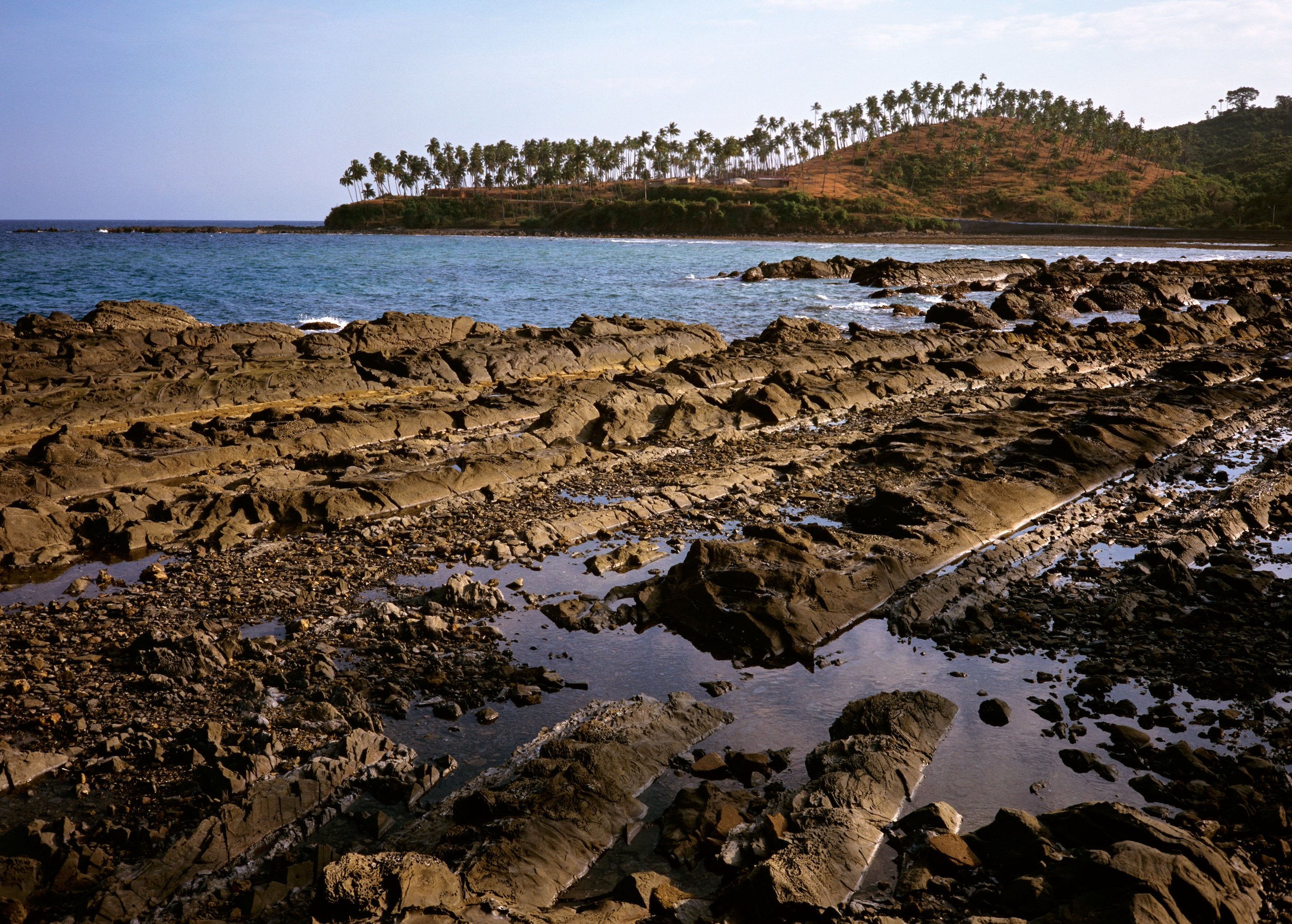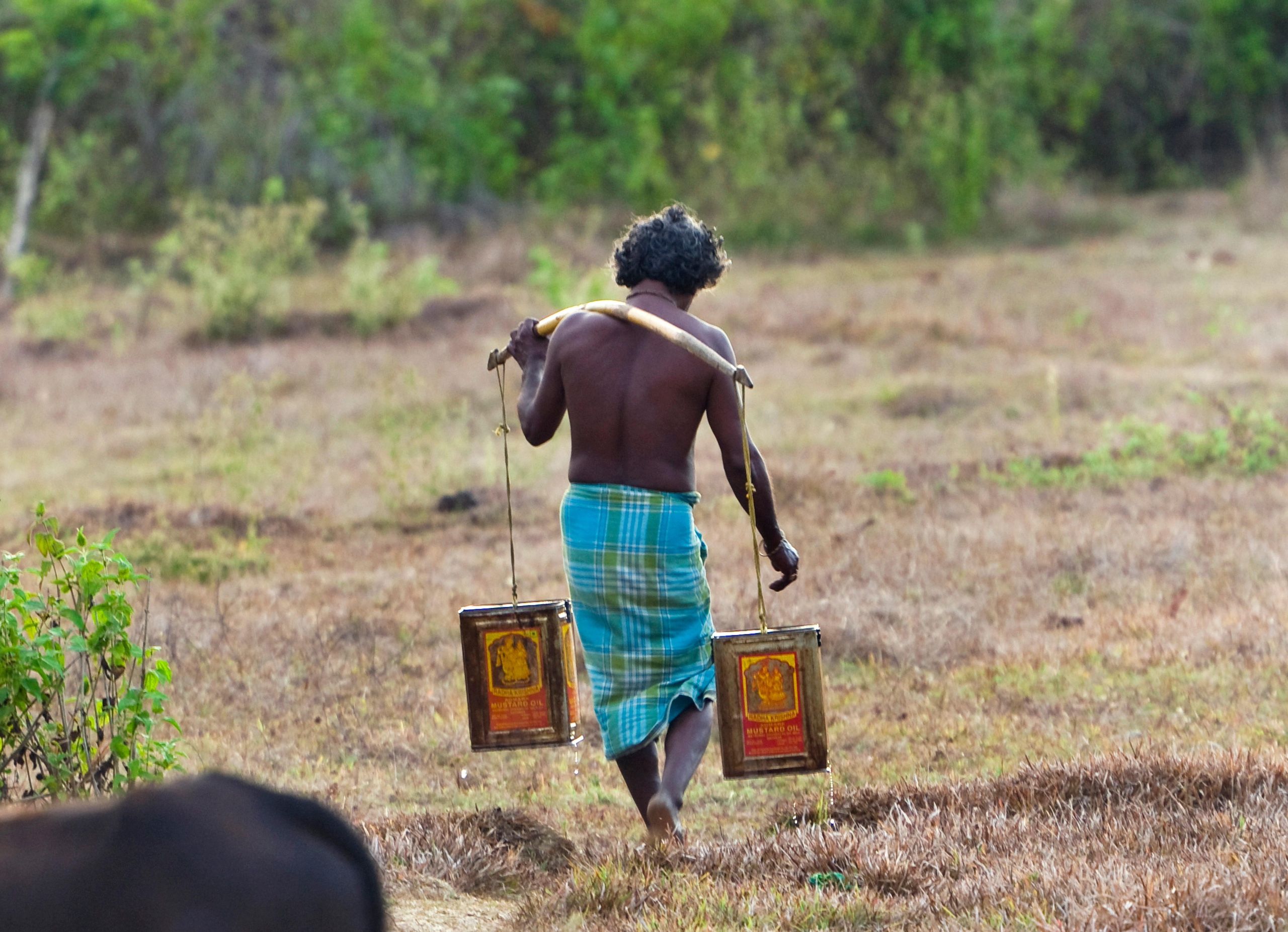As clouds gathered on the horizon one morning in late May, the residents of Kadamtala in India’s Andaman Islands were elated. “That was the first signs of rain in months,” says Arati Karmakar, a villager. Kadamtala lies 77 kilometres north of the Andaman capital, Port Blair. “It heralded the end of the dry season and the start of a long-awaited respite,” he adds.
The dry season in the Andaman archipelago, located in the northeast Indian Ocean, spans from January to May and has been associated with water scarcity for several decades now. However, this year has been particularly bad, with the authorities limiting water supplies to once every seven to eight days, forcing people to store drinking water and, in some cases, resort to using muddy pits for other purposes.
“Ever since I remember we have always faced seasonal water scarcity, but in recent years the situation has worsened,” says Karmakar.
Small islands, big problems
The Andamans, famed for their palm-tree dotted white beaches, consist of 836 islands in the Bay of Bengal, separated from Thailand and Myanmar by the sea that bears their name. Drinking water for the over 400,000 people who live on the 38 inhabited islands is sourced from reservoirs and springs. Water scarcity is a perennial issue, exacerbated during the dry season.
This island water crisis is not unique to the Andamans. Small island states worldwide are facing increasingly stressed freshwater resources. According to a study published in the journal Nature Climate Change, researchers estimated that by 2050, the majority of small island states will experience a decline in groundwater sources if climate change goes unabated.
The Andaman Islands exemplify the severe consequences of unaddressed water problems.
In Bakultala, a village north of Port Blair and near the shore, residents endured a ten-day stretch without water in early May. Narayan Mondal, the gram pradhan [village chief] of Bakultala, tells Dialogue Earth that over 10,000 residents were affected: “The exasperated villagers staged protests on multiple occasions.”
Steep hills and inadequate aquifers
The Andaman chain of islands is characterised by rough terrain, with hills enclosing narrow elongated valleys. Flat land is scarce and the coral-fringed coasts are deeply indented, forming tidal creeks. The islands receive roughly 3,000 mm of rainfall annually, mainly from the southwest monsoon, comparable to rainfall levels in some parts of the Amazon. However, nearly 75–80% of this water is lost to runoff into the sea. Geological features such as steep slopes, low soil permeability and close proximity to the sea lower the freshwater retention capacity of these islands.
A 2020 report by the Central Ground Water Board (CGWB) of India highlights that the South Andaman districts do not have good aquifers. On Little Andaman Island, which is underlain by coralline rocks and limestone, the groundwater that does exist is highly vulnerable to earthquakes. The 2004 earthquake and subsequent tsunami destroyed many dug wells “and water in dams disappeared,” according to the report. A more recent report from the CGWB, published in 2022, found that the water table is so low in North and Middle Andaman, that salty seawater seeps into freshwater, a process called “salinity ingress”. Other islands have it even worse: on small Chowra, with a rocky upland at its southern end, the steep landscape means that whatever rainfall occurs gets discharged into the sea almost as soon as it lands.
Climate change is making things worse.
A. Velmurugan, the principal scientist at the Central Island Agricultural Research Institute (CIARI) in Port Blair, says that rainfall distribution has become increasingly erratic on the islands. Preserving rainwater is difficult, making intense bouts of precipitation less useful than regular smaller rains.
“Although the total amount of rainfall remains the same, the number of rainy days has come down. Prior to 1990 rainfall used to commence from the first week of May, but now it has receded towards the end of May. This is likely an impact of El Niño that suppresses rainfall over India during the monsoon,” says Velmurugan.
In 2023, the Andaman authorities claimed that inadequate monsoons, providing less-than-expected rainfall in the previous two years, had resulted in a water crisis. However, this is disputed by locals, who blame their water problems on chronic underinvestment. Failing water infrastructure compounds the challenge of water shortages across Andaman – a union territory where the lieutenant governor, as the head of administration, has huge power.
Ageing pipes and public protests
India’s Har Ghar Jal scheme, which was supposed to provide piped water to every household by 2024, was expected to increase funding and focus on water infrastructure. However, T.S.G. Bhasker, chairman of Andaman Nicobar Territorial Congress campaign committee, says that over the years, administrators have treated the issue of Andaman’s local water scarcity as a minor issue. “Local representatives often flag the problem of water shortage, but it hardly gets the attention it deserves,” he says.
Some islanders believe the water scarcity they faced in early May was largely due to pipeline problems. “The pipeline that carries water from Panchawati spring to Bakultala was laid over 25 years ago. In recent years, there has been frequent leaks leading to water wastage,” Mondal from Bakultala village tells Dialogue Earth. “Such loss of water due to failing infrastructure adds to the woes. The pipeline is in urgent need of repairs.”
Harinagar, another village in Middle Andaman, also experienced water shortages due to leaking pipelines. Manojit Halder, Harinagar’s gram pradhan, describes the combination of rainfall and infrastructure problems as “a double whammy”.
In August, 2023, Kamorta Island witnessed massive public protests after authorities supplied muddy water for several days. S. K. Gupta, an assistant engineer at the Andaman Public Works Department (APWD), the agency responsible for water distribution, explains that damage to the filter bed of the water treatment plant was the cause. It took several weeks to replace the filter bed. Gupta adds that a lack of funding often hinders pipeline repairs.
Policy problems and potential solutions
Kuldeep Rai Sharma, a former member of the Indian parliament representing Andaman and Nicobar islands, believes the issue is largely a policy problem. He advocates for a comprehensive water policy and a central agency dedicated to managing the water crisis: “People of Andaman have been demanding the establishment of a jal [water] board for better management and distribution of water.”
A 2022 report by CGWB on Andaman’s aquifers recommended the construction of check dams – small dams designed to slow water flow in channels – and ponds to preserve freshwater.
At present, the Dhanikhari reservoir is the only source of drinking water for Port Blair and its surrounding areas. Dependence on only one water source is risky, given the islands’ seismic activity and ongoing climate changes disrupt the monsoon, raising temperatures.
“Therefore, it is imperative to develop more water sources such as reservoirs, ponds, check dams to meet the ever-increasing demand for water,” Sharma says. “And solar-based desalination plants could be a good option for smaller islands.”
Back in Kadamtala, villagers celebrate the clouds and the promise of rain they bring. In future, they will need more than the whim of an ever-changing weather cycle to ensure a steady water supply.
“If only we could find a way to store rainwater to use it in the dry season, our water woes would be over,” says Karmakar.











